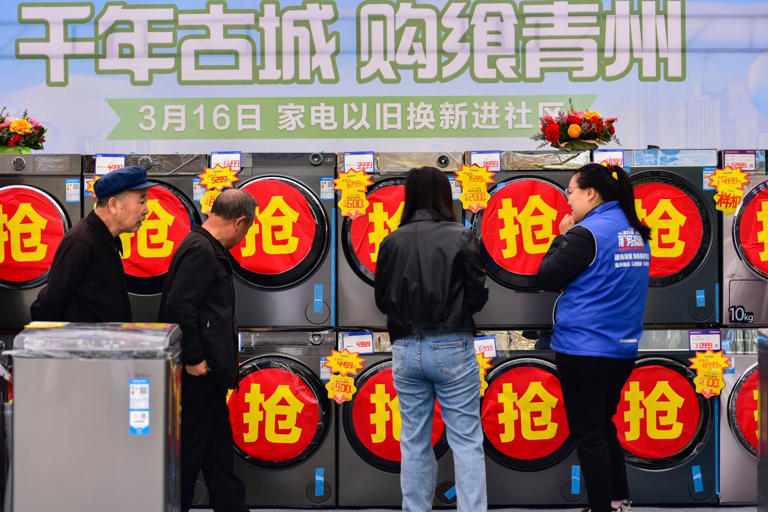China’s adoption of a program reminiscent of America’s “cash for clunkers” initiative is a multifaceted strategy aimed at revitalizing the economy amidst various economic challenges. Unlike its U.S. counterpart focused solely on vehicle trade-ins, China’s approach extends to incentivizing the replacement of outdated home appliances and industrial equipment. This comprehensive effort underscores Beijing’s determination to stimulate consumer spending and bolster economic growth in the face of prolonged property market instability and subdued consumer confidence.
Despite the ambitious objectives, economists remain cautious about the program’s potential effectiveness and long-term ramifications. While it may provide a short-term economic boost, there are concerns that it could exacerbate global anxieties surrounding China’s manufacturing dominance and export competitiveness. By incentivizing factories to increase production, the program may further fuel concerns about oversupply and market saturation, particularly in industries where China already holds significant market share.
In contrast to previous iterations, this revamped program is anticipated to have a larger scale, with central government funding allocated to support its implementation. However, uncertainties persist regarding the program’s size, scope, and overall impact on economic dynamics, leading to cautious optimism among policymakers and analysts alike.
One notable challenge facing the program is consumer dissatisfaction with the trade-in prices offered for old appliances, as highlighted in state media reports. This consumer reluctance could potentially limit participation and undermine the program’s effectiveness in stimulating consumer spending and economic activity.
Furthermore, there are concerns about the program’s potential to distort consumer behavior, with some economists warning that it may divert spending away from other sectors, such as dining and services, thus undermining overall economic recovery efforts.
Reflecting on past experiences, particularly the mixed outcomes of the U.S. cash for clunkers program, economists emphasize the importance of careful planning and evaluation to mitigate unintended consequences and maximize the program’s effectiveness.
Despite these challenges, China’s leaders are committed to advancing their economic revitalization agenda, prioritizing investment in manufacturing and high-tech industries. This strategic focus underscores China’s broader economic objectives and policy priorities, aimed at achieving sustainable and balanced growth in the long term.
In summary, while the cash-for-clunkers program represents a targeted stimulus measure, its success will hinge on effective implementation, careful monitoring, and ongoing adjustments to address emerging challenges and opportunities. As China navigates its economic recovery journey, policymakers face complex decisions to ensure the program’s alignment with broader economic goals and priorities.
